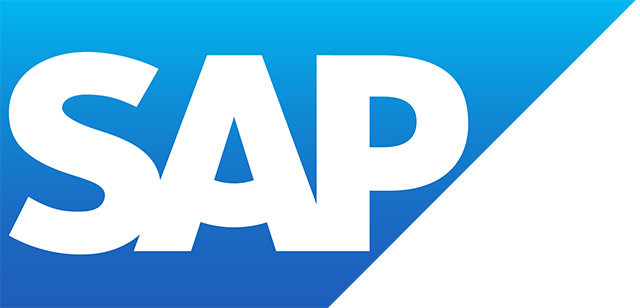SAP Order Management
Filter By
Browse By
- SAP Analytics and AI
- SAP Application Development and Integration
- All SAP Application Development and Integration
- SAP ABAP
- SAP ABAP Development Tools
- SAP ABAP Test Cockpit
- SAP API Management
- SAP BAPI
- SAP Basis
- SAP BRF
- SAP Business Application Studio
- SAP CMS
- SAP Design Studio
- SAP Development Tools
- SAP DevOps
- SAP EAI
- SAP EDI
- SAP Extension Suite
- SAP Fiori
- SAP Fiori Elements
- SAP Integration Suite
- SAP Low Code Application Development
- SAP Low Code Automation
- SAP Netweaver
- SAP Release Management
- SAP UI5
- SAP Web Application Server
- SAP Web IDE
- SAP Business Process Management
- SAP Center of Excellence
- SAP CIO
- SAP Customer Experience
- SAP Data and Data Management
- All SAP Data and Data Management
- SAP BW
- SAP BW/4HANA
- SAP Crystal Reports
- SAP Data Archiving
- SAP Data Center
- SAP Data Governance
- SAP Data Integration
- SAP Data Migration
- SAP Data Quality
- SAP Data Services
- SAP Data Strategy
- SAP Data Visualization
- SAP Data Warehouse Cloud
- SAP DMS
- SAP Document Control
- SAP EIM
- SAP ETL
- SAP ETL Tools
- SAP HANA
- SAP HANA Administration
- SAP HANA Deployment Infrastructure
- SAP HANA Studio
- SAP Master Data
- SAP Master Data Governance
- SAP MDM
- SAP Enterprise Architect
- SAP Enterprise Asset Management
- SAP ERP
- SAP Finance
- All SAP Finance
- SAP Accounting
- SAP AR AP
- SAP Asset Accounting
- SAP Billing Systems
- SAP BPC
- SAP BRIM
- SAP Cash Management
- SAP Central Finance
- SAP Controlling
- SAP COPA
- SAP Cost Center Accounting
- SAP Currency Risk
- SAP e-invoicing
- SAP FICO
- SAP Finance Automation
- SAP Advanced Financial Closing
- SAP Financial Consolidation
- SAP Financial Planning
- SAP FX Risk
- SAP General Ledger
- SAP Global Tax Management
- SAP Hyperion
- SAP Order to Cash
- SAP Payment Processing
- SAP Profitability Analysis
- SAP Rebate Management
- SAP S/4HANA Finance
- SAP SWIFT Compliance
- SAP Treasury Management
- SAP Universal Journal
- SAP Governance Risk and Compliance
- SAP Human Capital Management
- SAP Intelligent Technologies
- SAP Platform and Technology
- All SAP Platform and Technology
- SAP Business Technology Platform
- SAP Cloud
- SAP Cloud Connector
- SAP Cloud Integration Platform
- SAP Cloud Migration
- SAP Cloud Platform
- SAP Cloud Providers
- SAP Cloud Strategy
- SAP Digital Signature
- SAP Container Platform
- SAP HANA Enterprise Cloud
- SAP Digital Asset Management
- SAP Smart Forms
- SAP HEC
- SAP Digital Integration Hub
- SAP Hyperscalers
- SAP Infrastructure
- SAP Messaging
- SAP Quality and Testing
- SAP Security
- SAP Spend Management
- SAP Supply Chain Management
- All SAP Supply Chain Management
- SAP APO
- SAP Asset Management
- SAP Business Network
- SAP Digital Manufacturing Cloud
- SAP Digital Twin
- SAP EWM
- SAP IBP
- SAP Inventory Management
- SAP Label Printing
- SAP Logistics
- SAP Manufacturing
- SAP Manufacturing Automation
- SAP MES
- SAP MII
- SAP MM
- SAP MRO
- SAP MRP
- SAP Order Management
- SAP Plant Maintenance
- SAP PLM
- SAP Production Planning
- SAP S&OP
- SAP SD
- SAP SPM
- SAP Supply Chain Planning
- SAP Track and Trace
- SAP Transportation Management
- SAP System Administration
Supply Chain Management: SAP Order Management
High volume, high velocity, high expectation. These are the three key consequences of the rise of e-commerce and customer expectation today. The smoother and faster the flow, the more orders the company can process, and the quicker the business is able to grow.
Order Management Simply Defined
Order management refers to the process of receiving, tracking, and fulfilling customer orders. The order management process begins when an order is placed and ends when the customer gets the package. Some challenges for companies today include human errors, process backlogs, visibility, transportation errors, and poor communication.
An order management system can automate and streamline the ordering processes, with some companies choosing SAP Order Management for a solution. The entire process generally consists of accepting an order, picking, packing, and shipping the items. The SAP Hybris Order Management module helps organizations streamline the order processes across all the channels. Different search options are available under each category, where users can search for all the orders. Some options are delivery, pickup, or list of all orders available.
Supply Chain Management: SAP Order Management
High volume, high velocity, high expectation. These are the three key consequences of the rise of e-commerce and customer expectation today. The smoother and faster the flow, the more orders the company can process, and the quicker the business is able to grow.
Order Management Simply Defined
Order management refers to the process of receiving, tracking, and fulfilling customer orders. The order management process begins when an order is placed and ends when the customer gets the package. Some challenges for companies today include human errors, process backlogs, visibility, transportation errors, and poor communication.
An order management system can automate and streamline the ordering processes, with some companies choosing SAP Order Management for a solution. The entire process generally consists of accepting an order, picking, packing, and shipping the items. The SAP Hybris Order Management module helps organizations streamline the order processes across all the channels. Different search options are available under each category, where users can search for all the orders. Some options are delivery, pickup, or list of all orders available.
5 Simple Ways to Improve Order Management are:
- Employee engagement
- Sync the customer order system to the inventory
- Make it simple and useful to the customer
- Automate, automate, automate
- Consolidate order channels.
Take control of your process operations and put your customer relationships first. Order management relies upon almost every department in a company. From a customer service team to the warehouse staff, the accounting department through to delivery partners. When mastered effectively, order management ensures a business’s workflow runs smoothly. This is achieved by establishing efficient processes to keep it moving forward, maintaining customer satisfaction, and protecting a company’s reputation.
Benefits of SAP Order Management:
- Increased revenue
- Increased customer satisfaction
- Reduce inventory carrying costs
- Achieve greater employee productivity.
Vendor partners offering software solutions or operational intelligence solutions are: SAP, Gib, or OpsVeda.
Key Considerations for SAPinsiders are:
- Order Management Automation: Ensuring a Successful Implementation in any Environment. Watch the webinar to introduce automation to your order management processes and transform the effects on your cashflow.
- Real-Time Inventory and Order Visibility: Key for Successful Supply Chain Management. Probodh Chiplunkar at Ithena Technologies shares an article on how today’s technological landscape affects business organizations. Transparency can increase customer retention and reach, helping companies achieve successful and profitable omnichannel ordering capabilities.
399 results
-

 Premium
Premium
Make SAP Automatic Credit Management Work for You
Reading time: 14 mins
Credit management will likely always be a manual, ad hoc process to some degree, but you can make it easier. Learn how to use a tool you already have to automate the process as much as possible. Key Concept SAP Automatic Credit Management first became available with R/3 Release 3.0. Using settings in FI and...…
-

 Premium
Premium
A Guide to Selecting the Appropriate Cost Object to Support Your Manufacturing Process
Reading time: 10 mins
A company can choose between different methods for manufacturing its products, depending on the type of product, complexity of the production process, and whether the product is manufactured in response to customer demand for particular options. Different cost objects are available within product costing in SAP ERP, which complement each manufacturing process. Key Concept A...…
-

- SAP SD
 Premium
Premium
4 Steps to Develop a Point of Sales (POS) with SAP Screen Personas 3.0
Reading time: 14 mins
Learn how to make adjustments to the Create Sales Order transaction (transaction code VA01) using SAP Screen Personas 3.0. See how SAP Screen Personas 3.0 helps make the process of inputting values for a point of sale (POS) order faster and more intuitive than completing this process in a standard SAP system Key Concept The point...…
-
-

 Premium
Premium
Reduce Customer Claims by Automating Your Price Protection Process
Reading time: 10 mins
Learn how to automate the price protection process by using SAP user exits and VOFM routines and requirements in SAP R/3 through SAP ERP Central Component 6.0. Having an automated solution helps both the buyer and seller save significant time because it effectively manages the price protection process. Key Concept Price protection is an agreement...…
-

 Premium
Premium
Steps to Enhance SAP Third-Party Procurement
Reading time: 10 mins
Examine the five steps involved in setting up a standard third-party procurement process in your R/3 Enterprise or mySAP ERP Central Component system. Then look at options you have for special orders. A workaround allows you to cancel third-party orders even after the third-party vendor receives the order. Key Concept The third-party procurement solution available...…
-

 Premium
Premium
Send Alerts and Customer Confirmations Using Actions
Reading time: 13 mins
The standard action profile ORDER_MESSAGES allows you to send output documents to your customers. With Action Wizard, you can build an action profile that automatically creates a follow-up activity when a sales contract expires. Also, find out how to use actions to send alerts to the Business Workplace or SAP NetWeaver Portal inbox. Key Concept...…
-

- SAP ERP
 Premium
Premium
N:N Batch Traceability on a Production Order Using WIP Batches
Reading time: 11 mins
Learn how to activate a work in process (WIP) batch and how to use it achieve an N:N batch traceability on a single production order. See how to activate the WIP batch functionality and the necessary customizing settings to use it. Key Concept The work in process (WIP) batch is used to keep the batch...…
-
-

 Premium
Premium
Post Invoices Automatically with ERS
Reading time: 31 mins
The evaluated receipt settlement (ERS) lets your R/3 system post vendor invoices automatically without internal paper flow or manual verification steps. The author says that his company recently implemented ERS at a large public service organization. The task of posting approximately 100 daily invoices, which formerly required two full-time employees, now is completed in one...…
-

 Premium
Premium
Warehouse Management: Make Your Picking Moves in SAP WM Strategically
Reading time: 22 mins
SAP’s removal strategies are as complex as its placement strategies, but with diligence and the right tools, you’ll find they can overcome many business challenges. Key Concept SAP’s Warehouse Management (WM) module provides just as extensive picking strategies and methods as it does for placement. You can use WM to determine what material to pick...…
-

- SAP Quality Management
 Premium
Premium
Exploit SAP Quality Management to Handle External Activities
Reading time: 27 mins
Learn about the main Quality Management (QM) functionalities relevant for external activities during the production process in the case of discrete manufacturing, using the Materials Management (MM), Production Planning (PP), Quality Management (QM), and Financial Accounting (FI) modules. Follow details about the main customizing settings to be done in the system from a QM point...…
Become a Member
Unlimited access to thousands of resources for SAP-specific expertise that can only be found here.
Become a Partner
Access exclusive SAP insights, expert marketing strategies, and high-value services including research reports, webinars, and buyers' guides, all designed to boost your campaign ROI by up to 50% within the SAP ecosystem.
Upcoming Events
Related Vendors
Your request has been successfully sent


